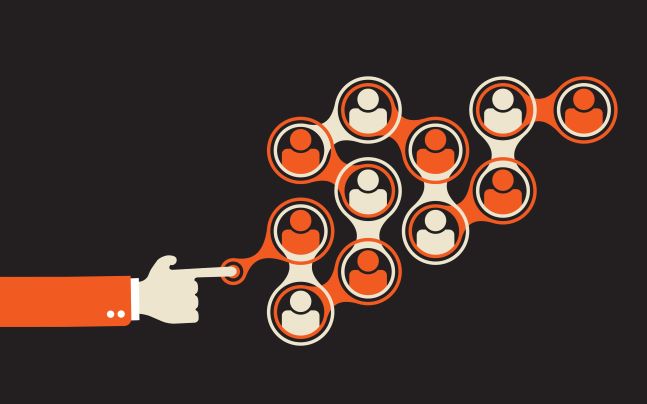

Networks play a key role in the recruitment of social movement participants and agencies. Any social movement needs the energy and force of individuals to achieve momentum and take action. Networks can be springboards that bring individuals together. Change agents, as members of the network, can play a crucial role in introducing and recruiting others into a network and its social circle. This helps to build a base of supporters or a critical mass, which can be one of the hardest phases of social movement evolution (Bate et al., 2004a; Carson-Stevens et al., 2013; Dementia Action Alliance, 2009; Tremblay et al., 2018).
Networks can support new participants and agencies' uptake and support of a change. When network members openly share and exchange resources, innovations, programs and connections that work with new participants and agencies, they help them to expand uptake and support of the change more rapidly (Katcher, 2010; Kennedy et al., 2019; Serna-Restrepo et al., 2018).

Accelerate Your Success: The Knowledge-to-Action Framework’s ‘Adapt knowledge to local context’ action cycle phase highlights the importance of accessing resources to support practice change and their pivotal role in helping or hindering progress. Change agents and change teams can utilize their networks to learn more about resources, which ones are essential for practice changes and strategies to secure them. Visit Adapt knowledge to local context to find out more.
Networks serve to advance the interests of a social movement by engaging leadership, sharing materials, and using communication channels to foster mutual support, collaboration, cooperation and solidarity. Where there is a high level of connectedness, ideas, updates, resources and other entities are shared openly and widely. The active engagement within and across networks can accelerate change and help members to reach their goals (Bajnok et al., 2018b; Bate et al., 2004a; Burbidge, 2017; Katcher, 2010; Grinspun, 2018).
Networks support collective action, and collective action forms through networks. Networks can act as catalysts for mobilizing collective action. As a structure that brings people and organizations together, networks support the social ties of members and the coordination of collaborative or collective actions for change. They can serve as a communications platform between groups to keep them updated on the activities of the social movement.
Mobilizing and collective action attracts others who share an alliance with the shared concern or strongly desired change and the goals of the social movement. These individuals and their networks may also join the social movement. As such, networks and collective action act as bidirectional supports for one another (Bate et al., 2004a; Campbell, 2020; Embry & Grossman, 2006; Lippman et al., 2013; Lippman et al., 2016).
Local networks foster an awareness of a larger social movement. Local networks and their membership may seek out other networks whose purpose and goals are mutually aligned. The engagement of one network with another can boost their collective motivation, values and knowledge. Together, the networks can strengthen the power of the social movement and its shared vision (Katcher, 2010).
Networks support the sustainability of the social movement. Networks bring together the strength, support, knowledge and power of individuals, groups, and/or organizations engaged in a shared cause. They build capacity in their membership which supports leadership and sustainability (Katcher, 2010).
